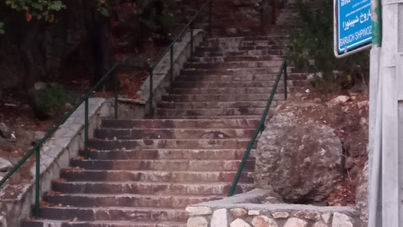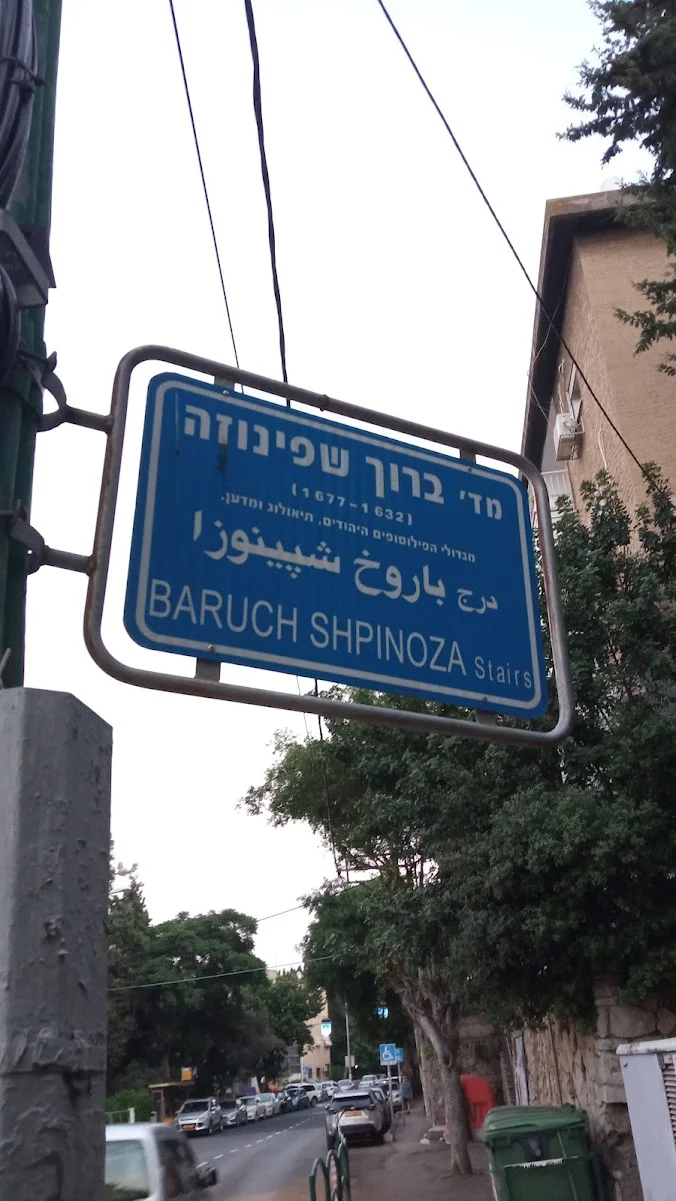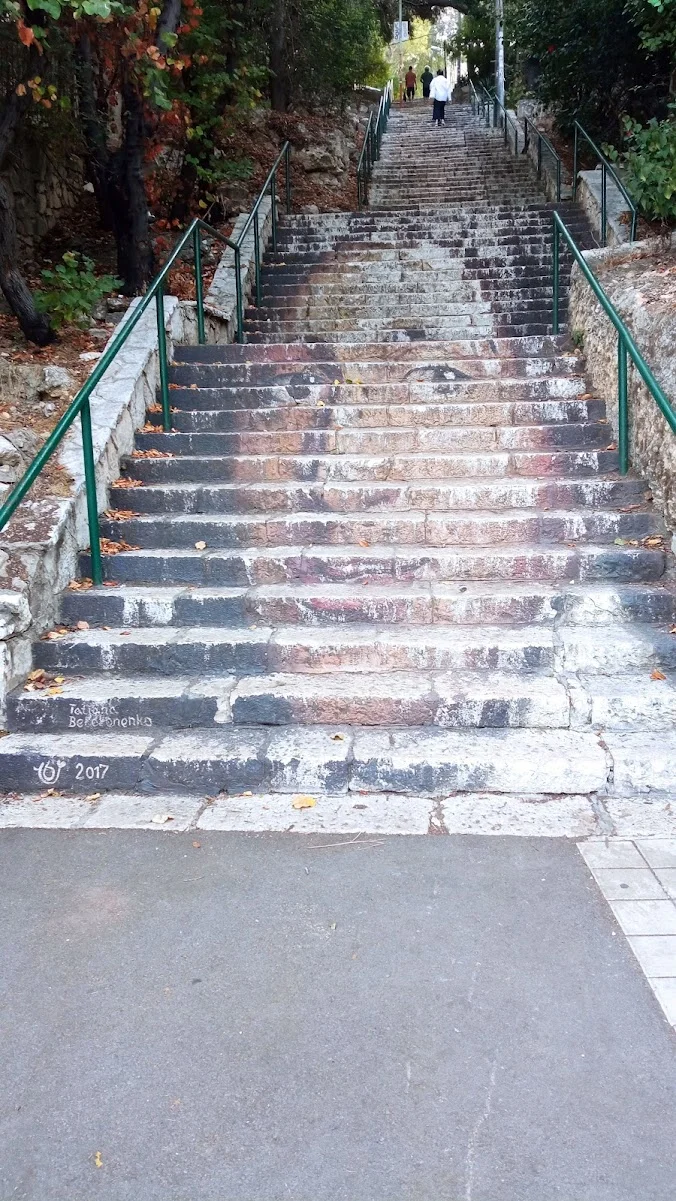Spinoza’s Stairway is another site I must have walked by hundreds of times before noticing there was anything there. To be fair, Baruch Spinoza’s portrait on the stairway that bears his name did suffer quite a bit of wear and tear in the almost six years that passed since the beautiful piece was painted by Haifa artist Tatiana Belokonenko.
Baruch Spinoza was a philosopher of Portuguese Sephardic Jewish origin who operated in the Netherlands during the 17th Century and was one of the early and significant thinkers of the Enlightenment period and of modern biblical criticism. Spinoza’s break from the prevailing dogmas of Judaism led the Jewish community in Amsterdam to issue a writ of cherem (ban/expulsion) against him. Like many other great thinkers, Spinoza was ahead of his time.
Centuries later, Spinoza’s work is much more appreciated by modern society including by Albert Einstein who said:
“I believe in Spinoza’s God, who reveals himself in the lawful harmony of all that exists, but not in a God who concerns himself with the fate and the doings of mankind.”
The Haifa Spinoza Stairway connects Balfour Street with Montefiore Street. Both streets are named after two significant people in modern Israel’s history: James Balfour, known for authoring the ‘Balfour Declaration’ of 1917, which supported the establishment of a Jewish Homeland in Palestine; and Sir Moses Montefiore, known as the founder of Mishkenot Sha’ananim, the first Jewish neighborhood outside of the Old City of Jerusalem.



